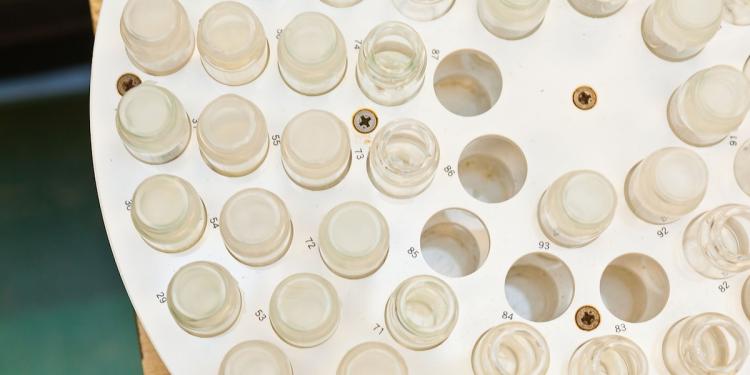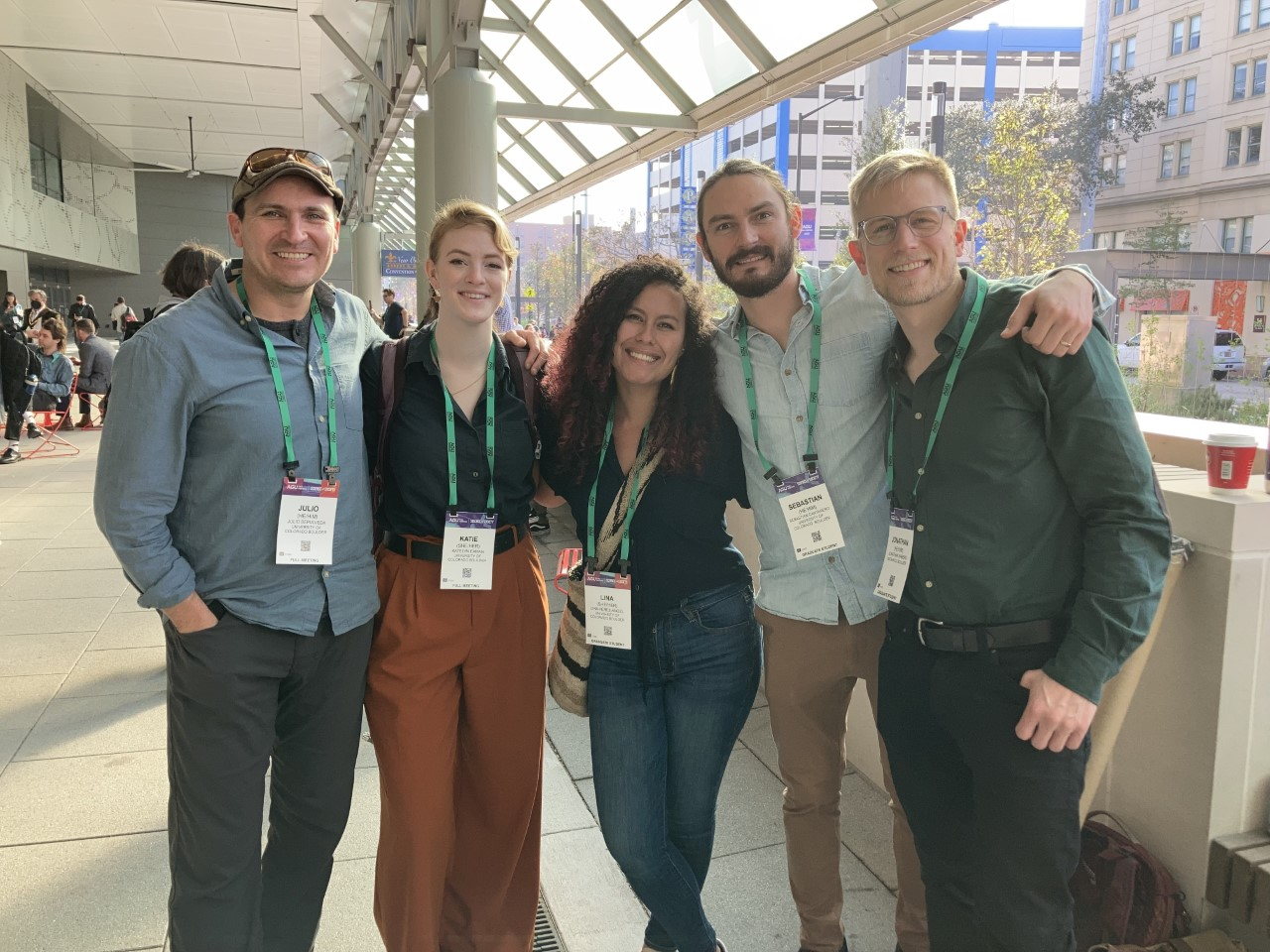Organic Geochemistry Lab
We strive to unravel the mechanisms driving biological adaptation to environmental stressors through chemical modifications of cell membrane lipids (biomarkers). We use this knowledge to reconstruct the co-evolution of climate, environments, and microbial and biogeochemical processes through Earth’s history with the ultimate goal of providing context for possible future scenarios of our Earth system.
Our lab is a shared analytical facility for multidisciplinary and collaborative research.

Julio Sepúlveda
Director

Lennart van Maldegem
Lab manager

Allison Jacobel
Visiting Scientist

Edgart Flores
Postdoc

David Harning
Affiliate

Jonathan Raberg
Postdoc

Maria Luisa Sánchez Montes
Postdoc

Harry Allbrook
Grad student
- Lina Pérez-Angel, Postdoc & PhD 2022
- Sebastian Cantarero, PhD 2022
- Garrett Boudinot, PhD 2020
- Steven Moran, UNAVCO-RESESS Summer Undergraduate Fellow. Wichita State University, Kansas (Summer 2017)
- Michael "Avi" Gross, Undergraduate student, Geological Sciences and Chemistry (2015-2017)
- Raman Umamaheswaran, Visiting Graduate Student, S.N. Bose Fellow, University of Delhi, India (Summer 2016)
- Marwa Baroumi, Visiting Graduate Student, EAOG Fellow, University of Tunis El Manar, Tunisia (Fall 2015)
Contact
Julio Sepúlveda for lab and group inquires, including if you would like to join our group.
Phone: 303-735-6877 SEEL room 214A
Lab Phone: 303-735-3277 SEEL room 218
Who are we?
We are a diverse group of Earth scientists who study the interplay between changing environments, ecosystems, and climate.
Click on a photo to zoom
Research
The Organic Geochemistry Group studies the interplay between microorganisms, biogeochemical processes, and climate in contemporary settings (e.g., continental margins, marine oxygen minimum zones, extreme environments), and paleo-ecosystems across major climatic/biotic transitions in Earth history (e.g., mass extinction events, greenhouse climates, glacial-interglacial transitions). We approach these systems with a focus on the structures, distributions, and stable isotope composition of cell membrane lipids (biomarkers) that can be identified in water bodies, sediments, soils, and their fossilized remains preserved in the rock record.
Our research spans multiple disciplines:
- Organic geochemistry and biomarkers
- Stable isotope geochemistry
- Geobiology and life in extreme environments
- Paleoceanography
- Paleoclimate
- Chemical and biological oceanography

Julio Sepúlveda doing fieldwork.
Lab & facilities
The Organic Geochemistry Laboratory (OG Lab) at CU Boulder is a shared analytical facility for multidisciplinary and collaborative research in fields as diverse as biogeochemistry, geobiology, astrobiology, environmental microbiology, paleoceanography, paleoclimatology, and energy, among others.
The OG Lab focuses on the extraction, purification, separation, and chemical and isotopic characterization of organic molecules extracted from a wide array of environmental and culture samples. Our state-of-the-art analytical facility, housed in the Sustainability, Energy and Environment Complex/Laboratories (SEEC/SEEL), began its operation in Summer 2016 and was specifically designed for research operations in organic geochemistry and compound-specific isotope ratio mass spectrometry.
A Thermo Trace 1310 GC interphase to a Thermo Scientific TSQ 8000 EVO triple quadrupole MS allows for the separation, and the untargeted and targeted analysis of biomarkers using full scan and Selected Reaction Monitoring (SRM) modes. The high signal over ratio provided by SRM mode ensures a detection limit of ca. 0.5 fg on column, which is ideal for the analysis of samples with low organic content.
A Thermo Finnigan Trace GC Ultra interphase to a PolarisQ ion-trap MS allows for the further characterization of biomarkers via MS-MS experiments. This instrument can also be attached to a Pyromat Curie-Point pyrolyzer (Brechbühler Scientific Analytical Solutions) for the analysis of bulk samples.
A Hewlett Packard 6890 Gas GC with an FID allows for the separation and accurate quantification of organic molecules.
A Thermo Scientific Ultimate 3000 HPLC interphase to a Q Exactive Focus Orbitrap-Quadrupole MS via electrospray ionization (ESI) or atmospheric pressure chemical ionization (APCI) allows for high sensitivity and high mass resolution for the targeted and untargeted analysis of polar biomarkers. Targeted analysis of polar lipids can be performed in Selected Ion Monitoring (SIM) and Parallel Reaction Monitoring (PRM) modes with high-resolution accurate-mass detection, and with enhanced signal over noise ratio for the detection of biomarkers present in low abundance. Untargeted analysis of unknown molecules can be performed via Full scan and Data-Independent Acquisition (DIA) modes. The Ultimate 3000 HPLC is also equipped with a DAD-3000 Diode Array Detector and a Fraction Collector for the identification, quantification, isolation and concentration of organic molecules for further chemical and/or stable isotope analysis.
- Dionex 200 Accelerated Solvent Extraction (ASE) system
- Anton Paar Multiwave 3000 Microwave Extraction System
- Zymark Turbovap
- Gilson GX-274 ASPEC Solid Phase Extraction system
- Thermo Scientific Thermolyne Furnace Oven
- Thermo Scientific Refrigerated Centrifuge
- Freeze drier
- Refrigerator and freezers
- Microbalance and analytical balance

News
Publications
Publications for Sepúlveda and Harning are shown below.













